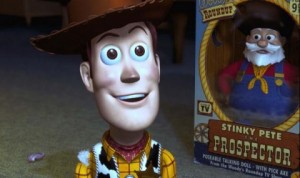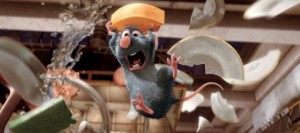I’m a big fan of all the pixar films, be it toy story, monsters university, WALL- E or up, I’ve seen all of them. Pixar has, literally, made my childhood and teenage years really very memorable. And I was always fascinated to explore the world behind making animated films. And moreover, anxious to look at the engineering aspect behind animated movie making. So, I am going to discuss about the evolution and the technology behind pixar. Pixar Animation Studios has played a very major role in making the childhood of many children fun and fruitful. Just to give a brief introduction, Pixar Animation Studios, or simply Pixar is an American computer animation film studio based in California. It was founded by Ed Catmull, Alvy Ray Smith and Steve Jobs. It is best known for its CGI- animated feature films created with PhotoRealistic RenderMan. PhotoRealistic RenderMan is the image rendering application programming interface used to generate high quality images. The Walt Disney company now owns pixar.
These days people don’t consider the effort that goes into making a CGI (computer-generated imagery) movie. They tend to assume that it’s the computer that does most of the work. Once the movie is released, people go to the theatres, watch it and have a good time. But they have no idea how much human effort and technical knowledge is put into making such films. With the advancement of computer graphics, Pixar has continued to upgrade its technology and keep pace with it.
A particular process called rendering is used in making CGI movies. It is the process of generating an image from a model, by using computer programs. A scene file contains objects in a defined data structure; it would contain geometry, viewpoint, texture, lighting, and shading information as a description of the scene. The data contained in the scene file is then passed to a rendering program to be processed and output the output is the CGI scene.
Toy Story (1995)
The fact that a fully animated movie could be made in 1995 was a big thing in itself. But behind all this was a careful balancing act between the usage of images and animation, and actually getting the movie completed within a reasonable period of time. Firstly, all the portions of an image which would require re- rendering were identified, and then they were rendered and were retained as the animation sequence developed. Toy story was definitely considered a revolutionary film in the history of CGI. The director of the movie, John Lasseter, was awarded a special oscar in 1996 “for the development and inspired application of techniques that have made possible the first feature-length computer-animated film”.
Toy Story 2 (1999)
A lot of effort went into scripting this film, since it was a sequel, so people had huge expectations from it. This film can also be considered another significant technical leap. In Toy Story 2, pixar focussed more on the characters, their behaviour and acting. Hence, they’re much more apparent in this movie.

More focus was given to characters, their acting and looks in this film. As we can see, Woody looks so much more clear here as compared to toy story 1.
Monster’s Inc. (2001)
In Monter’s Inc., one of the two main characters, Sully, was entirely covered in long fine fur. It was a challenging task for the pixar team to make the character look real and believable. Thus, they had to concentrate on his hair, which took more time in rendering. Each single hair was rendered and then the numerous hair were brought together to make the whole character. Perhaps, this was a very tough movie to make. But the richness of the visuals, quality of movement and expressions of the characters in Monster’s Inc. is striking.
Finding Nemo (2003)
Creating a whole underwater world with aquatic plants, aquatic animals, bubbles and currents was a big challenge for pixar. Since, it was an underwater movie, each small detail, the variations in colour and the numerous states of the sea surface were given a lot of importance. Each scene went through numerous rendering processes so as to optimise the animation quality.
Ratatouille (2007)
Ratatouille is my personal favourite pixar movie. This film entirely moved the quality of 3D imagery up a notch from previous productions. On seeing it for the first time, I couldn’t help but be impressed with the sequences where the rat ends up in water and then emerges with wet fur. But lots of other special software technology was designed for this specific film. The one that is repeatedly mentioned by pixar is that it developed special procedural routines allowing one model to cut or slice another. Therefore, when a vegetable gets cut in the kitchen, the software handles the division of one model by another, and the animator can concentrate on telling the story, not organising the increasing pieces of zucchini.
Everything has its pros and cons, similarly, CGI films too have their pros and cons. CGI movies are a masterful combination of great music and captivating animation, but not all audience like watching animated movies. For some, in fact, it’s not at all their cup of tea. So, in my opinion, there’s still more scope for pixar to make their movies, their characters look much more real and believable. Also, there are many brilliant animation studios out there in the world, so, pixar has to progress and do something different that distinguishes them from the other animation studios completely.
There are animated movies and 3D movies, I can’t help but wonder what’s next in store for us.
Reference List:
1. A history of CGI in movies. Retrieved from http://www.stikkymedia.com/blog/history-cgi-movies
2. Althouse, S. (2013). This theory on pixar movies will blow your mind. Retrieved from http://www.buzzfeed.com/spenceralthouse/this-theory-on-pixar-movies-will-blow-your-mind
3. Our story- Pixar. Retrieved from http://www.pixar.com/about/Our-Story






Three paragraphs would be enough
Not a lot about design. It is often quite general and loses the readers interest. There is a design story you are correct about that